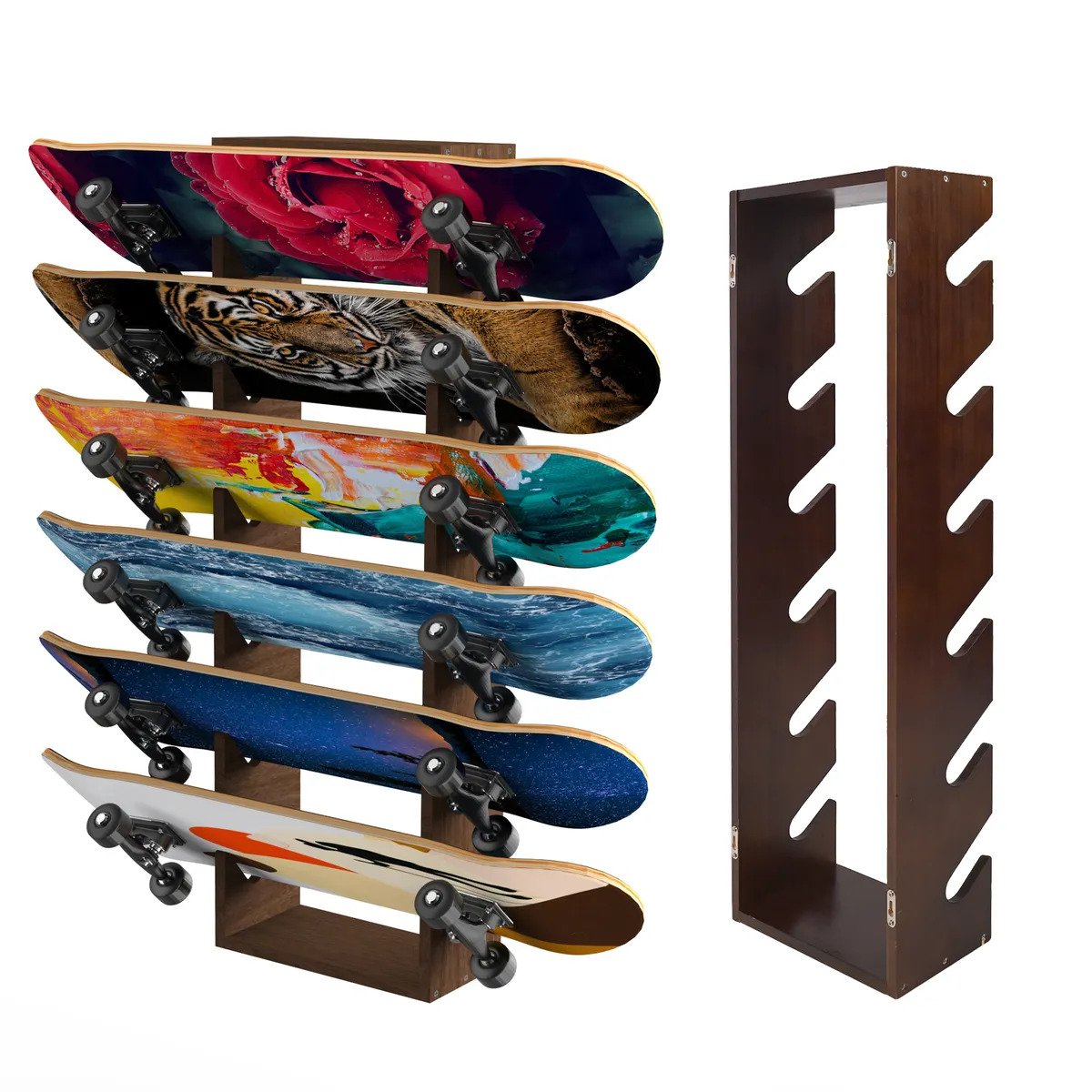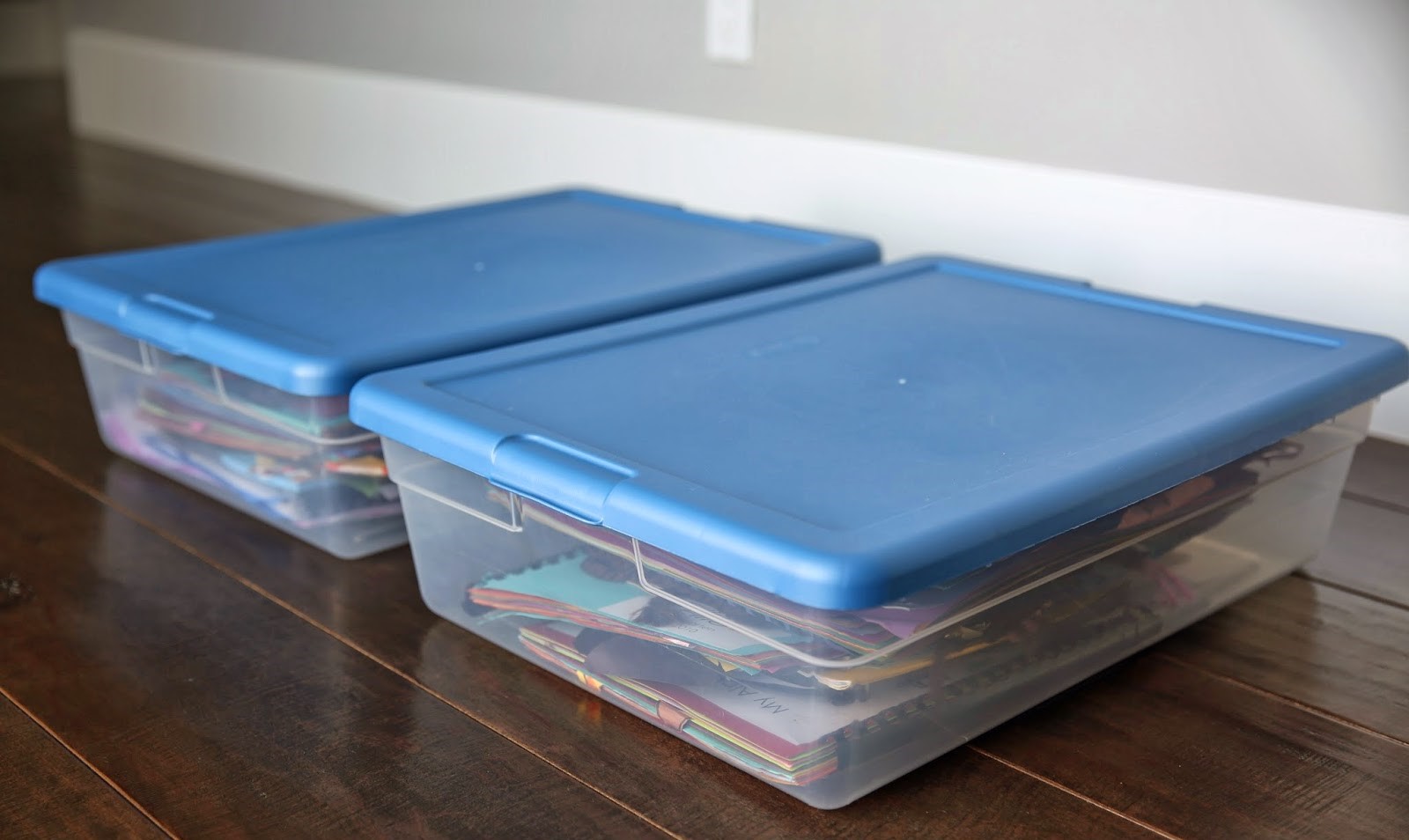

Articles
How To Store Skateboards
Modified: December 7, 2023
Learn about the best storage solutions for skateboards in this informative article. Discover the tips and tricks to keep your skateboards safe and organized.
(Many of the links in this article redirect to a specific reviewed product. Your purchase of these products through affiliate links helps to generate commission for Storables.com, at no extra cost. Learn more)
Introduction
Skateboarding is a popular and exhilarating activity enjoyed by people of all ages. Whether you’re a seasoned skater or a beginner, taking proper care of your skateboard is essential for its longevity and performance. When it comes to storage, there are a variety of options available to ensure your skateboard remains safe, organized, and ready for your next ride.
In this article, we will explore different storage options, provide tips on preparing your skateboard for storage, and discuss the benefits and limitations of each method. By the end, you’ll have all the information you need to choose the right storage solution that best suits your needs.
Key Takeaways:
- Proper storage is essential for maintaining skateboard longevity and performance. Consider wall mounts, freestanding racks, or skateboard bags to protect and organize your skateboard collection.
- Prepare your skateboard for storage by cleaning, removing trucks and wheels, and protecting the griptape. Avoid extreme temperatures, moisture, and perform regular maintenance to ensure its longevity.
Read more: How To Store A Skateboard
Choosing the Right Storage Option
When it comes to storing your skateboard, it’s important to consider the available space, convenience, and level of protection you desire. Here are three popular options to consider: wall mounts, freestanding racks, and skateboard bags.
Wall Mounts
Wall mounts are an excellent choice if you want to display your skateboard while keeping it securely stored. These mounts typically consist of brackets that attach to the wall and hold your skateboard horizontally. Wall mounts not only save space but also showcase your skateboard as a piece of art.
When selecting wall mounts, ensure that they are sturdy and designed to accommodate the size and weight of your skateboard. Some mounts even have additional hooks for hanging helmets or backpacks. Measure the dimensions of the wall space and consider the aesthetic appeal before installing the mounts.
Freestanding Racks
Freestanding racks are a versatile storage option that offers convenience and easy access to your skateboards. These racks can be placed on the floor or in a corner, providing a designated spot for your skateboards when they are not in use.
When choosing a freestanding rack, look for one that is made of durable materials, such as metal or wood, to ensure it can support the weight of your skateboards. Some racks even have adjustable slots to accommodate different sizes of skateboards or multiple boards. Consider the stability, size, and design of the rack to suit your storage needs.
Skateboard Bags
If you prefer to keep your skateboard protected from dust, dirt, and potential damage, skateboard bags are an ideal option. There are various types of bags available, including shoulder bags, backpacks, and duffle bags, specifically designed to hold and transport skateboards.
Skateboard bags typically feature padded compartments that securely hold your skateboard and provide extra protection for the grip tape and other components. Look for bags with adjustable straps, multiple compartments, and sturdy zippers for added convenience and durability. Keep in mind that skateboard bags are more suitable for transportation or short-term storage rather than long-term solutions.
Consider your specific needs and preferences when choosing the right storage option for your skateboard. Whether it’s displaying your skateboard on the wall, keeping them organized on a freestanding rack, or protecting them in a skateboard bag, each option offers unique benefits and can contribute to the longevity and condition of your skateboard.
Read more: How To Store Basil From Store
Preparing Your Skateboard for Storage
Before storing your skateboard, it’s important to properly prepare it to ensure its longevity and maintain its performance. Here are some essential steps to follow:
Cleaning
Start by thoroughly cleaning your skateboard to remove any debris, dirt, or grime that may have accumulated. Use a mild detergent or skateboard cleaner and a soft cloth or brush to gently scrub the deck, trucks, and wheels. Pay close attention to the griptape and make sure to remove any dirt or residue that may affect its grip.
After cleaning, wipe down the skateboard with a dry cloth to ensure it is completely dry before storing it. Moisture can lead to rust and damage, so it’s crucial to store a clean and dry skateboard.
Removing Trucks and Wheels
If you plan to store your skateboard for an extended period, consider removing the trucks and wheels. This step helps prevent any unnecessary pressure on the bushings and bearings, which can cause them to lose their performance and lifespan.
To remove the trucks, use a skate tool or a wrench to loosen the bolts. Gently lift the trucks off the skateboard and set them aside. Ensure you keep the bolts, nuts, and washers in a safe place to avoid misplacing them. Similarly, remove the wheels by loosening the nuts and carefully sliding them off the axles.
Protecting Griptape
Griptape is essential for maintaining traction and control while skateboarding. To protect the grip and prevent it from wearing out, cover it with a piece of wax paper or parchment paper before storing your skateboard. This will create a barrier and prevent dust or debris from sticking to the griptape.
Additionally, avoid storing your skateboard in a damp or humid environment, as moisture can cause the griptape to deteriorate. If you notice any damage to the griptape, such as tears or worn-out areas, consider replacing it before storing your skateboard.
By following these steps to prepare your skateboard for storage, you can ensure that it remains in optimal condition during the period of non-use. Proper cleaning, removing trucks and wheels, and protecting the griptape will contribute to the longevity of your skateboard and preserve its performance when you’re ready to ride again.
Read more: How To Store Store-Bought Bread
Storing Skateboards in Wall Mounts
If you’re looking for a visually appealing and space-saving storage option, wall mounts are an excellent choice. Here’s a step-by-step guide on how to store your skateboards using wall mounts:
Measuring and Marking
Before installing the wall mounts, measure the width of your skateboard decks to ensure they fit properly. Mark the desired height for each skateboard on the wall, leaving enough space between them for easy access and display. Use a pencil or masking tape to make clear markings.
Mounting the Brackets
Start by locating the studs or wall anchors in the marked positions. It’s important to mount the brackets securely onto a stable surface to ensure the safety of your skateboards. Use a suitable drill bit to make pilot holes and then attach the brackets with screws or bolts. Make sure the brackets are level and secure.
If you’re mounting the brackets on drywall, consider using wall anchors or toggle bolts for added stability. These provide extra support by distributing the weight across a larger area and preventing the bracket from coming loose over time.
Hanging the Skateboards
Once the brackets are securely mounted, it’s time to hang your skateboards. Carefully place the skateboards onto the brackets, making sure they are centered and balanced. The brackets should support the weight of the skateboards evenly to prevent any strain or damage.
Ensure that the wheels are facing inward towards the wall, as this will prevent any accidental movement or rolling. Depending on the wall mount design, some brackets may have additional hooks for hanging helmets, backpacks, or other accessories.
By utilizing wall mounts, you not only save space but also create an eye-catching display for your skateboards. This storage method keeps your boards off the floor, protecting them from potential damage, and adds a decorative touch to your living space or skateboard collection.
Read more: How To Store Basil From Grocery Store
Using Freestanding Racks for Storage
If you have space available in your home or garage, freestanding racks provide a convenient and organized solution for storing your skateboards. Here’s a step-by-step guide on how to use freestanding racks for skateboard storage:
Selecting a Suitable Rack
Before purchasing a freestanding rack, consider the number of skateboards you have and the space available. Look for a rack with enough slots or tiers to accommodate your skateboards. Opt for racks made of sturdy materials such as metal or wood, as they will provide better support and durability.
Spatial considerations are also important – ensure the rack will fit comfortably within your storage area without obstructing other items or walkways. Additionally, look for features like adjustable slots to accommodate different skateboard sizes or additional hooks for hanging accessories.
Assembling the Rack
Once you have acquired a suitable freestanding rack, it’s time to assemble it. Follow the manufacturer’s instructions and use the necessary tools to put the rack together. Take care to tighten all screws or bolts properly to ensure stability.
If the rack comes with adjustable slots, adjust them to the desired heights based on your skateboard sizes. This will ensure a snug fit and prevent any potential damage or instability.
Organizing the Skateboards
With the rack fully assembled, it’s time to organize your skateboards. Place each skateboard into a slot or tier on the rack, making sure they are centered and secure. If you have different types of skateboards, consider grouping them by size, style, or frequency of use for easier access.
Ensure that the skateboards are evenly distributed on the rack to maintain balance and prevent any strain or tip-overs. If the rack has additional hooks or compartments, you can use them to hang helmets, backpacks, or other skateboarding gear, keeping everything in one convenient location.
Using freestanding racks not only provides a dedicated space for your skateboards but also keeps them organized and easily accessible. By selecting a suitable rack, properly assembling it, and organizing your skateboards, you can create a neat and efficient storage solution that protects your boards while maximizing your available space.
Read more: How To Store Sherry
Utilizing Skateboard Bags
Skateboard bags offer a convenient and protective solution for storing and transporting your skateboard. Here’s a guide on utilizing skateboard bags to keep your skateboard safe and intact:
Types of Bags
There are several types of skateboard bags available, each offering unique features and benefits. Shoulder bags are compact and designed to carry a single skateboard, making them ideal for short trips or everyday use. Backpack-style bags have additional compartments for carrying accessories such as helmets, tools, or extra gear. Duffle bags provide ample space for multiple skateboards, making them suitable for longer trips or carrying multiple boards.
When choosing a skateboard bag, consider the size of your skateboard and the amount of gear you need to carry. Look for bags made of durable materials such as nylon or canvas with sturdy zippers for added protection and longevity.
Properly Storing Skateboards in Bags
When storing your skateboard in a bag, there are a few key steps to follow. Start by removing the trucks and wheels to reduce the overall bulk and potential damage during storage. Place the skateboard deck into the bag, ensuring it fits snugly and is centered. If you have multiple skateboards, place them separately in the bag, preventing any unnecessary pressure or contact.
Be sure to secure the bag properly by closing all zippers or fasteners tightly. This will prevent any movement or shifting of the skateboard inside the bag, reducing the risk of damage. If the bag has additional compartments, use them to store small items such as tools, spare parts, or personal belongings.
Benefits and Limitations of Bags
Skateboard bags offer several benefits for skateboard storage and transportation. They provide a protective barrier against dust, dirt, and potential scratches. Bags with padding or compartments can provide extra cushioning for the skateboard, reducing the risk of impact damage. Additionally, bags make it easier to carry your skateboard, especially when traveling to different skate spots or on public transportation.
However, it’s important to note that skateboard bags have their limitations. While they offer protection, they may not be as effective as other storage options when it comes to long-term storage or preventing exposure to extreme temperatures or humidity. Bags may also add extra weight and bulk, making them less ideal for everyday use if you need quick access to your skateboard.
Consider your specific needs and preferences when deciding whether skateboard bags are the right storage solution for you. Whether you’re looking for convenient transportation or short-term storage, skateboard bags can provide a practical and protective option for keeping your skateboard in top condition.
Read more: How To Store Mango
Additional Tips for Skateboard Storage
In addition to choosing the right storage option for your skateboard, there are a few additional tips to consider to ensure the longevity and performance of your board:
Avoiding Extreme Temperatures
Extreme temperatures can have a detrimental effect on your skateboard’s components. Avoid storing your skateboard in areas that are too hot or too cold, such as attics or unheated garages. Excessive heat can cause the deck to warp or delaminate, while extreme cold can make the wood brittle and potentially lead to cracks. Opt for storage areas with moderate and consistent temperatures to protect your skateboard.
Protecting from Moisture
Moisture, whether from rain or humidity, can be damaging to your skateboard. Avoid storing your skateboard in damp or humid environments, as moisture can cause rust on the trucks, damage the griptape, or even lead to wood rot. If your skateboard gets wet, make sure to dry it thoroughly before storing it. Consider using silica gel packs or moisture-absorbing products in your storage area to keep it dry and protected.
Regular Maintenance and Inspection
Regular maintenance and inspection of your skateboard are essential to keep it in good condition. Clean your skateboard regularly, removing any dirt or debris that can accumulate on the deck, trucks, and wheels. Inspect the trucks for any loose or worn-out parts and tighten or replace them as needed. Check the griptape for any signs of wear, tears, or loss of grip, and replace it if necessary. Regular maintenance allows you to catch any issues early and prolong the life of your skateboard.
Additionally, it’s a good practice to inspect your skateboard before and after each use. Look for any visible damage, such as cracks, chips, or wheel wear, and address them promptly. Taking the time to maintain and inspect your skateboard will ensure its continued performance and help prevent any unforeseen accidents or damage.
By following these additional tips for skateboard storage and maintenance, you can extend the lifespan of your skateboard and keep it in optimal condition for your next ride. Avoiding extreme temperatures, protecting from moisture, and performing regular maintenance are all essential practices to ensure the longevity and enjoyment of your skateboard.
Read more: How To Store Lobster
Conclusion
Properly storing your skateboard is crucial for maintaining its longevity, performance, and overall condition. Whether you choose wall mounts, freestanding racks, or skateboard bags, each storage option offers its own unique benefits and considerations.
Wall mounts provide a visually appealing display while saving space, allowing you to showcase your skateboard collection. Freestanding racks offer convenience and organization, giving you easy access to your skateboards whenever you need them. Skateboard bags provide protection and portability, making it easy to transport your skateboard while keeping it safe from dirt, dust, and damage.
When preparing your skateboard for storage, remember to clean it thoroughly, remove trucks and wheels if necessary, and protect the griptape. These steps will help maintain and preserve your skateboard during periods of non-use.
Additionally, there are other important considerations when it comes to skateboard storage. Avoid exposing your skateboard to extreme temperatures, protect it from moisture, and perform regular maintenance and inspections to ensure its continued performance and safety.
By following these tips and choosing the right storage option for your skateboard, you can ensure that it remains in optimal condition for years to come. Whether you’re a dedicated skater or just getting started, proper storage is an essential aspect of caring for your skateboard investment and ensuring countless hours of enjoyment on the board.
So, take the time to choose the storage option that suits your needs, prepare your skateboard properly, and don’t forget to regularly inspect and maintain it. With a little attention and care, your skateboard will always be ready to hit the streets or skate parks whenever you are.
Frequently Asked Questions about How To Store Skateboards
Was this page helpful?
At Storables.com, we guarantee accurate and reliable information. Our content, validated by Expert Board Contributors, is crafted following stringent Editorial Policies. We're committed to providing you with well-researched, expert-backed insights for all your informational needs.










0 thoughts on “How To Store Skateboards”